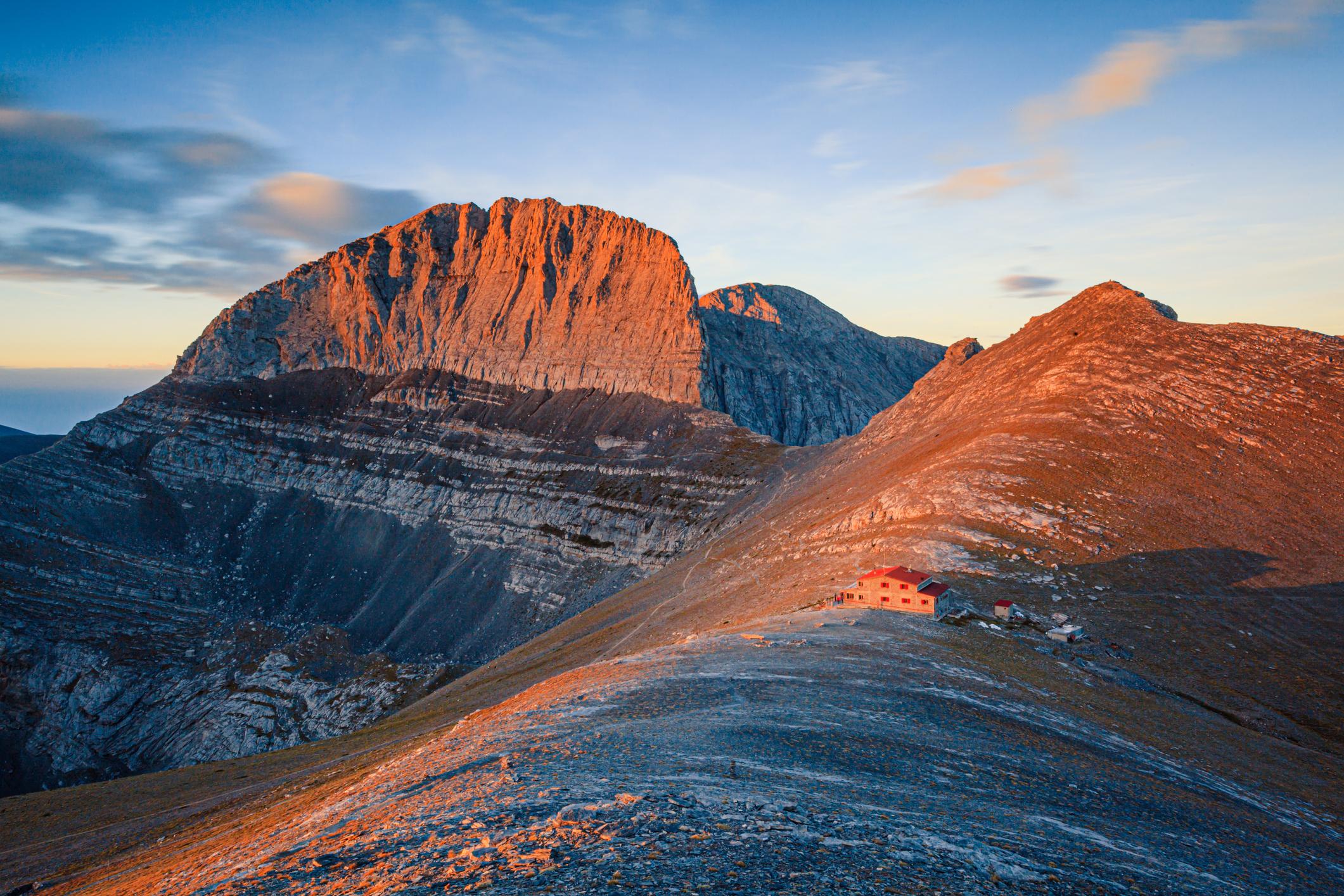Mount Olympus is one of the great hiking summits in Europe, and one of the most storied mountains on Earth. This is the home of the 12 Olympian gods, where Zeus throws around thunderbolts, Hera plots and plans against her enemies and Apollo plucks away on his heavenly lyre.
Mythology and Mount Olympus are one and the same...
Mytikas is the highest summit of Mount Olympus and the high point of Greece. It pokes out above the clouds, 2,917m (9,572ft) high. Just a little below is the throne of Zeus - on Stefani, Thronos Dios, looking down on the world. This throne-like rock formation at 2,902m (9,521ft) may not be the highest point on Olympus, but the formidable steep curve makes it utterly unmissable.
“Mythology and Mount Olympus are one and the same,” says Athanasios Pitenis, a local mountain guide who grew up at the foot of the mountain and has climbed it over 100 times. When Pitenis guides hikers on the mountain, he works the mythology of the mountain, like the flora and fauna, into his narratives.
The plateau beneath the peaks is not any old clearing, but the home of the nine Muses, the goddesses of arts. The forests that stretch beneath them, sending the scent of pine needles through the air, are not just a collection of trees but the border between the realm of the gods and the world of mortal humans.
“When you start hiking up Olympus, you feel the mythology," Athanasios says. "You feel all of this.
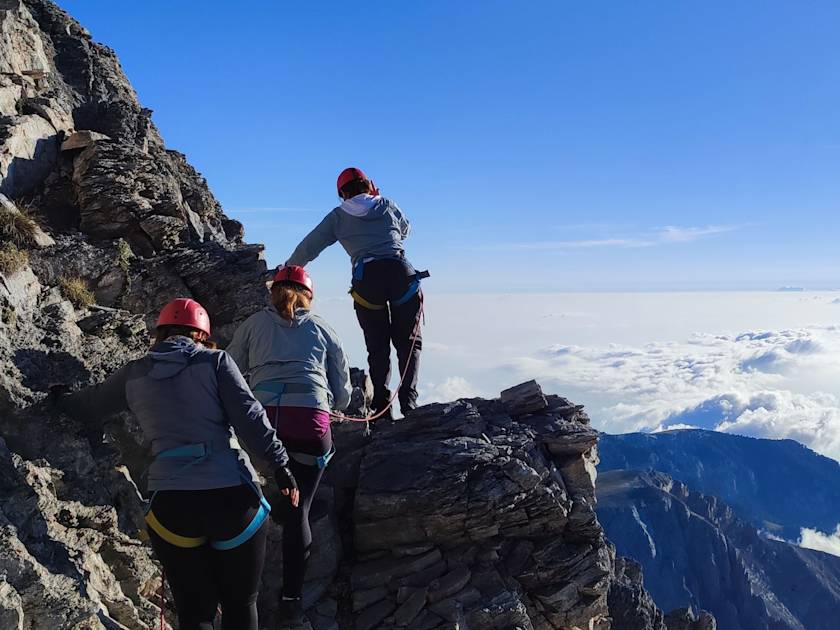
“Our guides inform the group with every step they take about the mythology - about the 12 gods, about the Enipeas River, about the peaks, about how long ago it was all created, not only from the scientific point of view, but from a mythological point of view. The stories of the fights with Cyclopes, and the throne of Zeus. It's not only the hiking here. You hike around the myths.”
The 12 gods of Olympus are legendary, but how do they fit into the history of this remarkable mountain? And what role does the mountain play in the myths?
The Mythical Origins of Mount Olympus
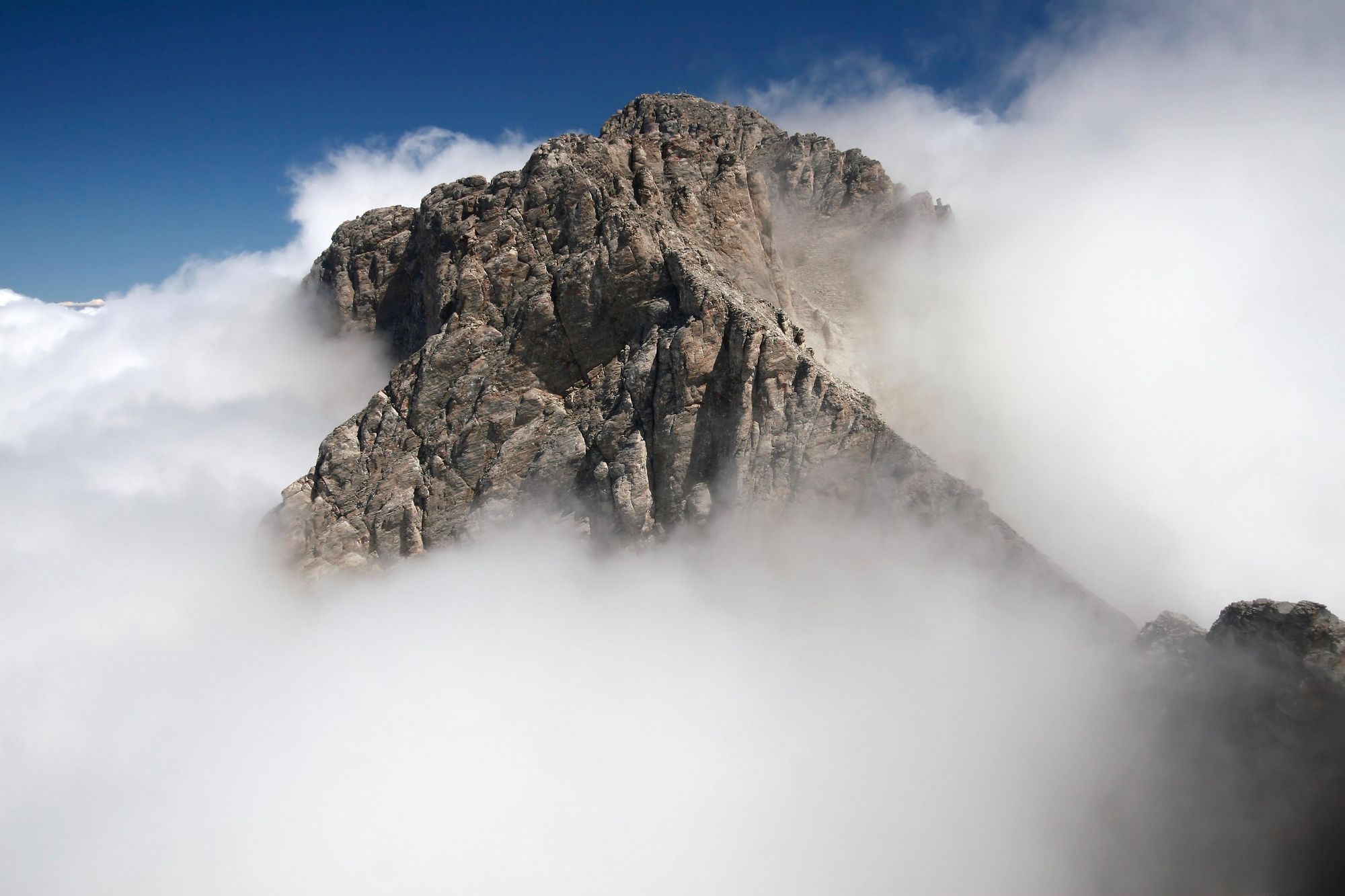
In the mortal world of science, the bulk of Mount Olympus formed during the Hellenic orogeny - when the African and Eurasian tectonic plates collided, 200 million years ago. The distinctive peaks of Greece's highest mountain were sculpted by rivers, streams, wind and slow glaciation in the many years that followed.
In the mythological world, things are rather more complicated. To explain how Mount Olympus came into begin you must first explain the very origins of the universe. As Theogony, an early work by the poet Hesiod from 730-700BC, describes: “First it was Chaos, and next broad-bosomed Earth, ever secure seat of all the immortals, who inhabit the peaks of snow-capped Olympus.”
The Olympians fought from Mount Olympus, and when they won, and the Titans were cast away, it became their seat of power.
Chaos was the original state in the universe. Before Zeus and the Olympian gods ever arrived, the cosmos was ruled by a group known as the Titans - the children of the deities Gaia (the Earth) and Ouranos (the sky), who had emerged out of the chaos - the void - when there was nothing at all.
The Titans were deities who also represented elements of nature - for example the sun, the ocean, time and memory. Cronus was their leader, famed for castrating his own father, Ouranos, and throwing his severed genitalia into the ocean (where they would later spawn Aphrodite, goddess of love and beauty).
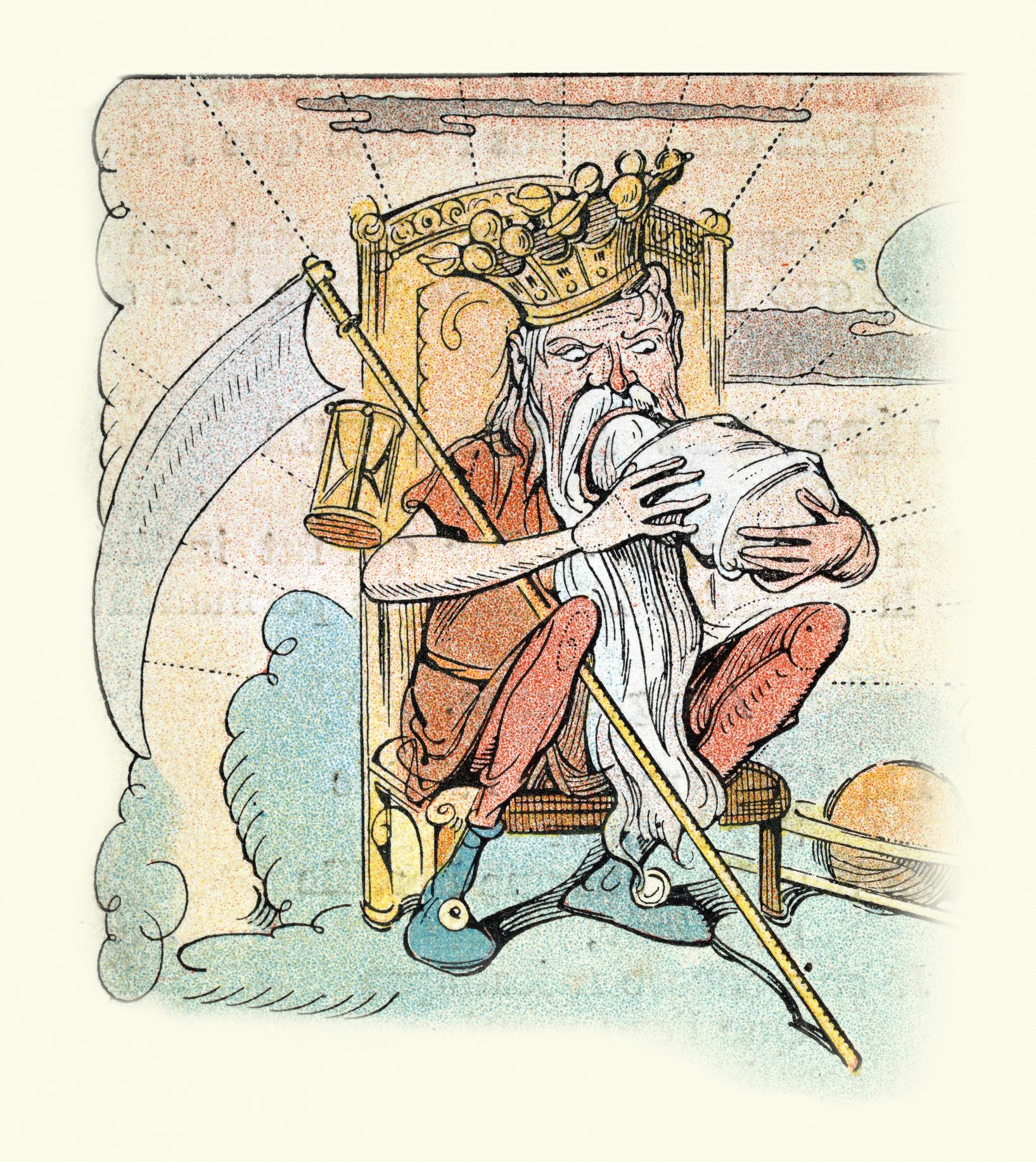
Cronus married Rhea and together they had six Olympian children: Hestia; Demeter; Hera; Hades; Poseidon; and Zeus. There was a prophecy, however, that Cronus would fall to one of his own offspring, and fearing this, the Titan leader swallowed his children whole as they were born - with the exception of Zeus, who (through some deception) was hidden on the island of Crete by Rhea.
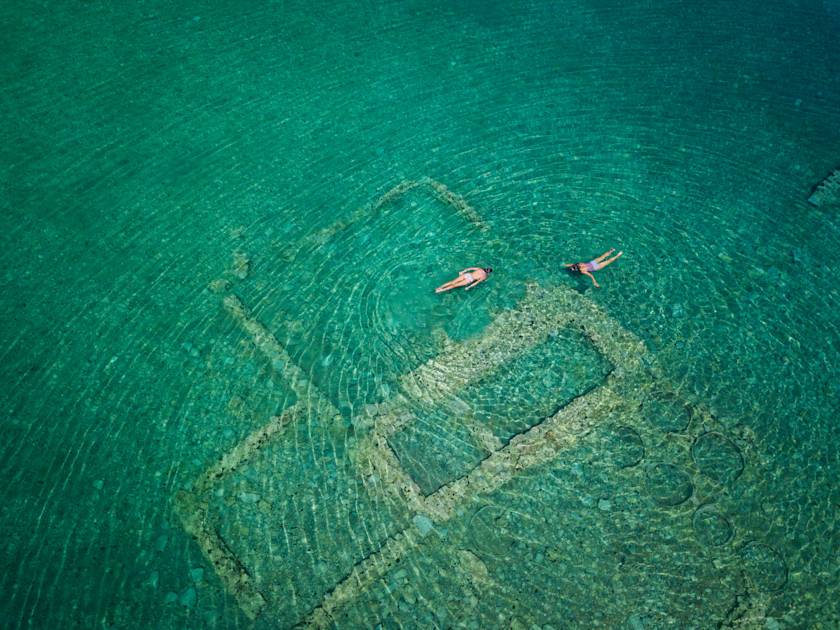
Once Zeus had grown up, he returned to the Greek mainland, and freed his siblings by giving Cronus an emetic drink which made him throw up his (now fully-grown) children. Zeus proceeded to free the Cyclopes (giant one-eyed creatures) from Cronus' imprisonment. They forged his thunderbolt as a reward. He also freed the Hecatoncheires, a giant with 100 hands, and both sided with Zeus and his siblings in the Titanomachy - a decade-long war for control.
The Titans fought from Mount Othrys, in central Greece. The Olympians fought from Mount Olympus. When Zeus won, and the Titans were cast away, Olympus became his seat of power - from where the gods ruled the cosmos.
Who are the 12 Olympic Gods who live on Mount Olympus?
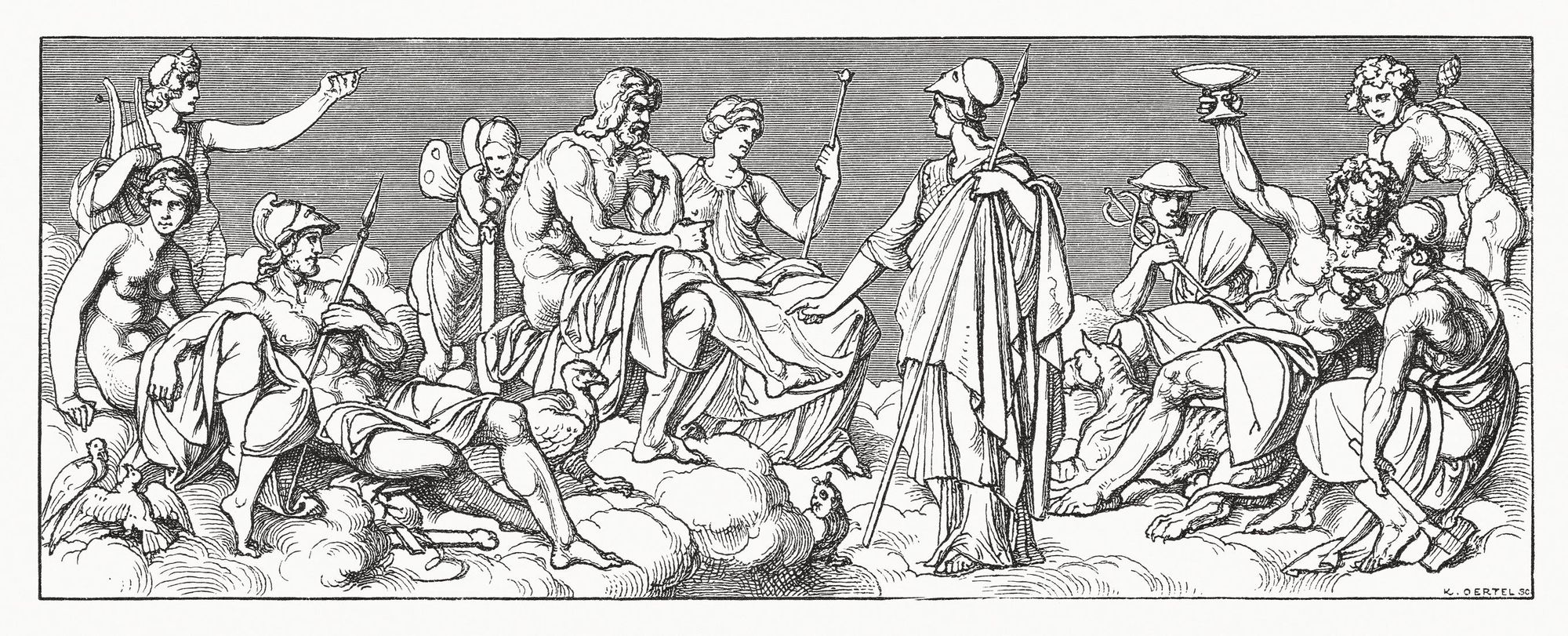
Let's take a step back for a second. Who are the 12 gods of Olympus? Here’s a tiny introduction to all 12 gods of Olympus, most of whom you’ll recognise by name.
Each had a role in the running of the cosmos, and each lived on Olympus:
- Zeus: King of the gods and wielder of thunderbolts. Strongest of all.
- Hera: Queen of the gods and goddess of marriage and family.
- Poseidon: Trident-wielding God of the sea, earthquakes and... horses.
- Athena: Goddess of wisdom, war and strategy, born from the head of Zeus.
- Apollo: God of sun, music, prophecy and healing; the symbol of balance.
- Artemis: Goddess of the hunt, wild animals and the moon.
- Ares: God of war, and specifically the brutal results of it: bloodshed.
- Aphrodite: Goddess of love, beauty and desire.
- Hephaestus: Divine blacksmith; god of fire and metalwork.
- Hermes: God of travel and more famously, the messenger of the gods.
- Hestia: Goddess of the home and a symbol of domestic peace.
- Demeter: Goddess of agriculture, harvest and fertility.
While the gods are usually referred to as 12, this isn’t a fixed roster. Depending on the storyteller and the story being told, the 12 can also include:
- Dionysus: God of wine, festivity, theatre and the newest of the Olympians. Often replaces Hestia, or joins the core group to make a table of 13.
What did Olympus look like in Greek mythology?
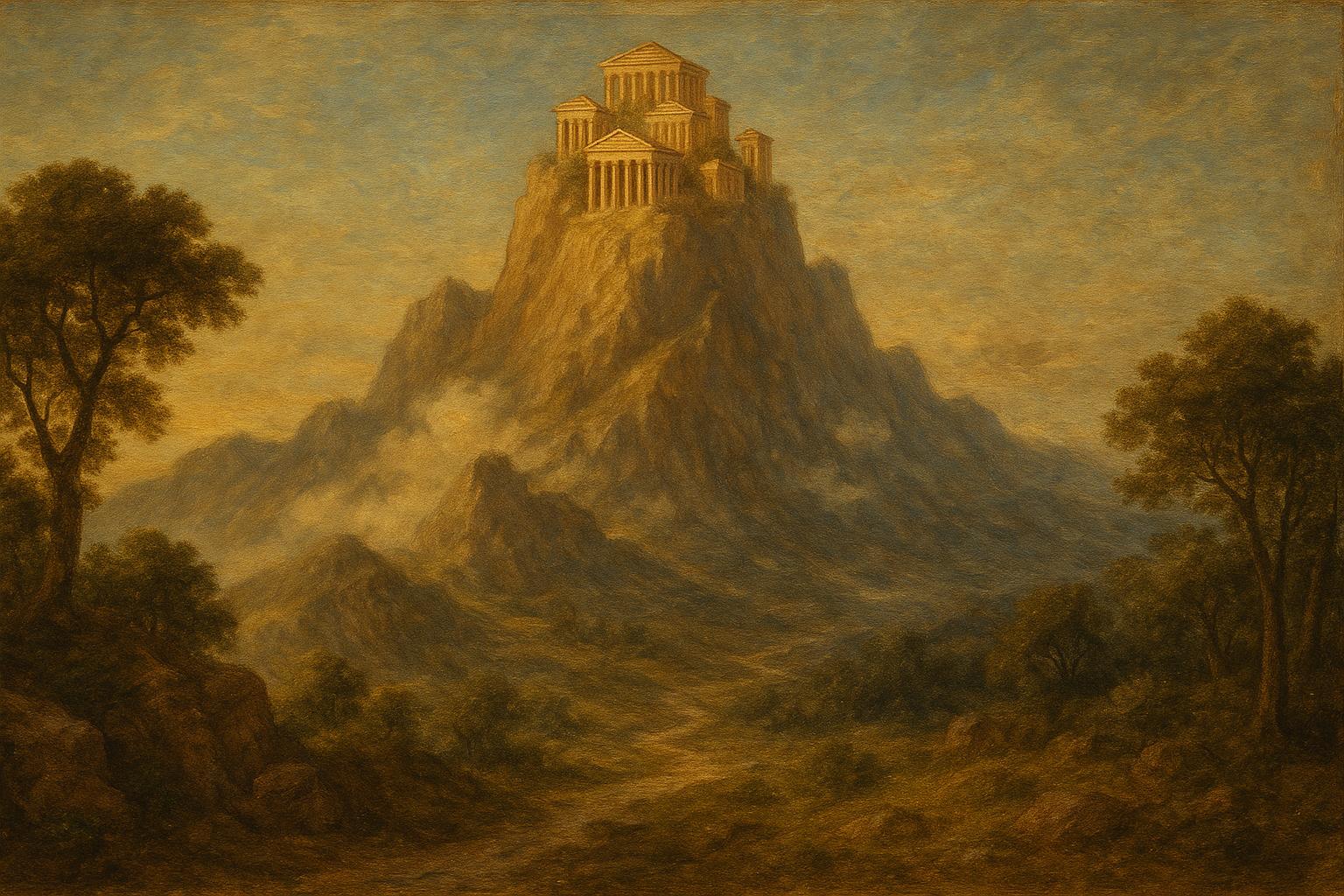
To enter Mount Olympus, you would have had to pass through golden gates guarded by the Horai - the goddesses of the seasons. They would open and close the gates for divine beings. Once you were in, marble and gold would sprawl.
Hephaestus was once thrown off Olympus entirely, falling for an entire day before landing in the ocean...
At the heart of the Olympus complex was the palace of Zeus, and assemblies would be held in a large courtyard in front of it. The palace was paved with gold. It was home to not just the council chamber but also a feasting hall, with automated furniture crafted by the master smith Hephaestus walking around.
In Homer’s Odyssey, the ancient Greek poet wrote of an Olympus “where they say there is an abode of the gods, ever unchanging: it is neither shaken by winds nor ever wet with rain, nor does snow come near it, but clear weather spreads cloudless about it, and a white radiance stretches above it.”
Note to hikers: we can't promise such weather if you do go climb the mountain.
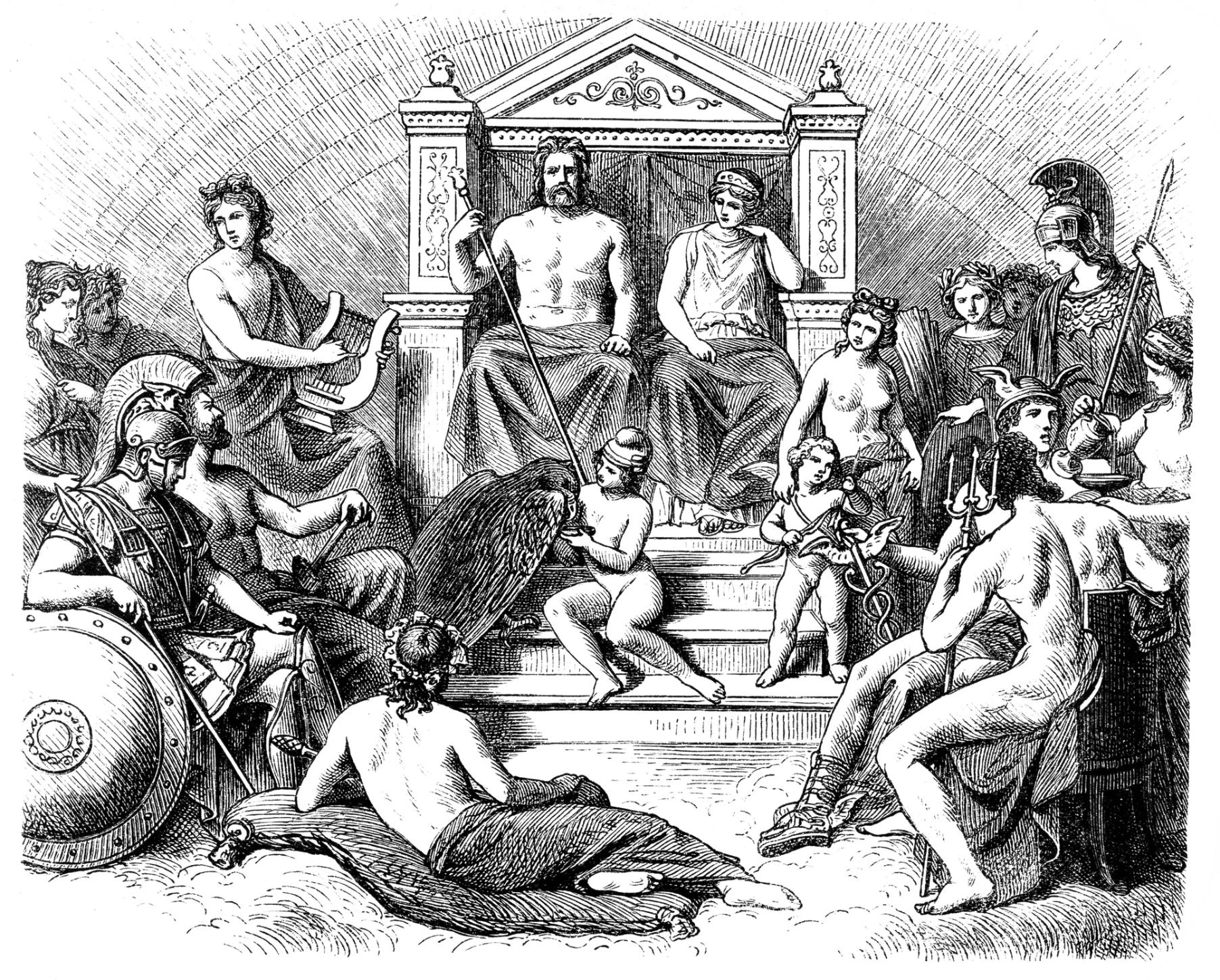
In the divine council chamber, the gods would meet to discuss human affairs, blessings and punishments. Matters discussed could be anything from the fate of Troy to the narratives of famed heroes like Odysseus, Heracles or Perseus. This was the stage on which much of Greek mythology unfolded.
The Olympian gods were not benevolent deities, but individual characters, each with great power and human-like flaws - like jealousy and anger.
“How shameless,” Zeus complained of us humans, in Homer’s Odyssey. “The way these mortals blame the gods. From us alone, they say, come all their miseries, yes, but they themselves, with their own reckless ways, compound their pains.”

When not in session, the gods would drink nectar and feast on ambrosia, which would grant them immortality and eternal youth. The Muses would provide music and poetry and Apollo would entertain guests with his lyre. In-fighting was startlingly common amongst gods. Hephaestus was once thrown off Olympus entirely, falling for an entire day before landing in the ocean. He later mastered his forging skills in the mortal world, and returned to Olympus.
Mythological stories set on Mount Olympus
Mount Olympus really was the stage on which so much of Greek mythology unfolded, but here are a few stories which specifically involve the mountain. The basic takeaway? If you’re going to climb Mount Olympus, don't anger the gods.
Bellerophon Falls from Pegasus
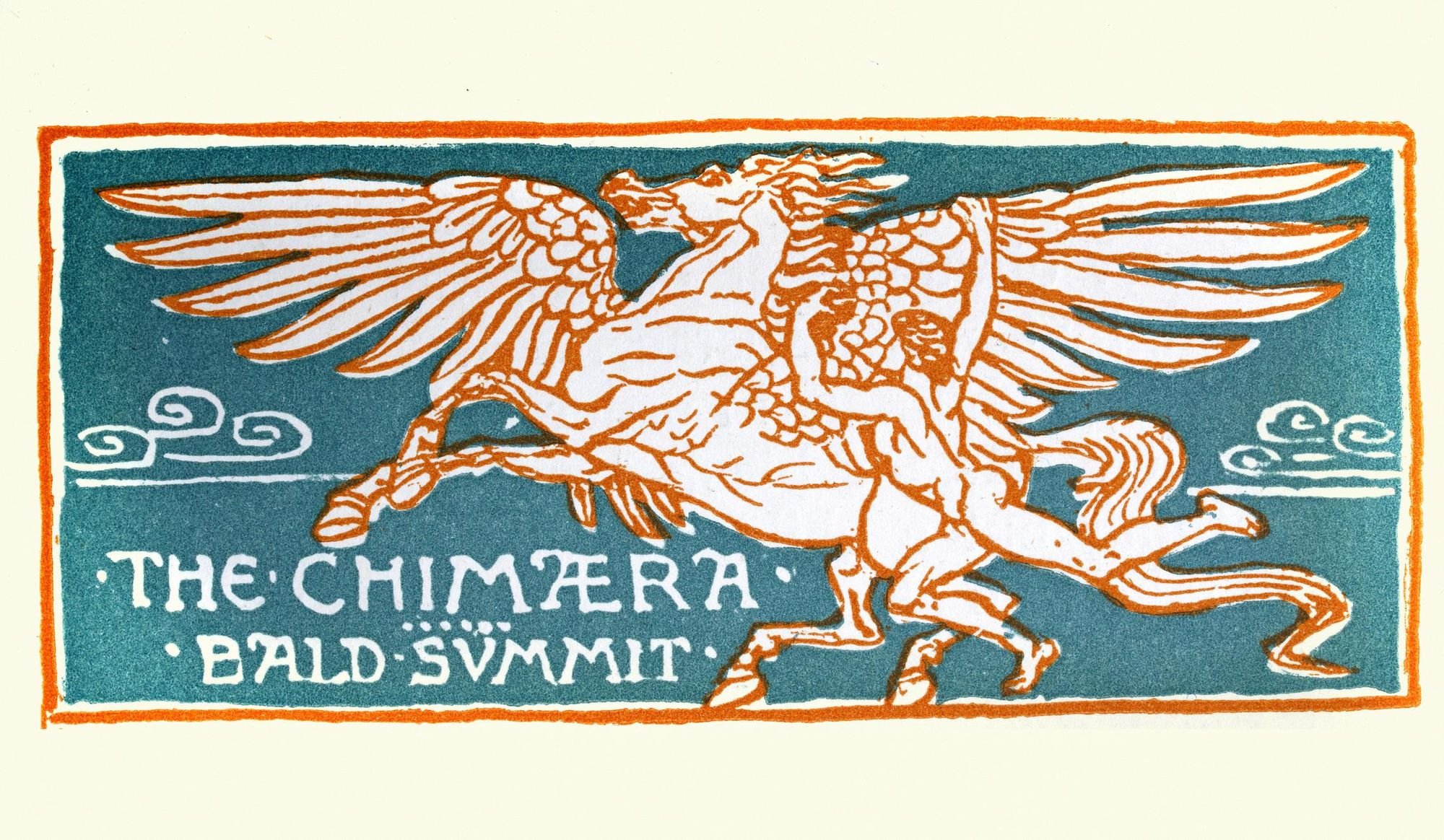
The legends once claimed no human could climb Mount Olympus. Naturally, though, where humans are forbidden, at least one or two of us will inevitably try and reach. Enter Bellerophon.
Bellerophon was a Greek hero who was banished from his hometown after accidentally killing his brother. He fled to Tiryns, where he was sent on a quest by the local king to attempt to slay the Chimera, a fanciful, fire-breathing creature with the head of a lion, the tail of a snake and a goat’s head curiously growing from its middle. Bellerophon was expected to die in his efforts but, after taming the winged horse Pegasus and riding it into battle, he successfully killed the Chimera.
Mounting Pegasus, he soared into the sky, higher and higher, until the golden gates of Olympus were just about in focus...
After this, our hero still yearned for more. Bellerophon wanted to see Olympus - and the gods. Mounting Pegasus, he soared into the sky, higher and higher, until the golden gates of Olympus were just about in focus. When Zeus saw Bellerophon, he sent a gadfly to sting Pegasus, who bucked the hero, sending him hurtling back down to Earth. As punishment for even trying to reach Olympus, Bellerophon was forced to live the rest of his life blind and maimed.
Heracles Ascends to Olympus
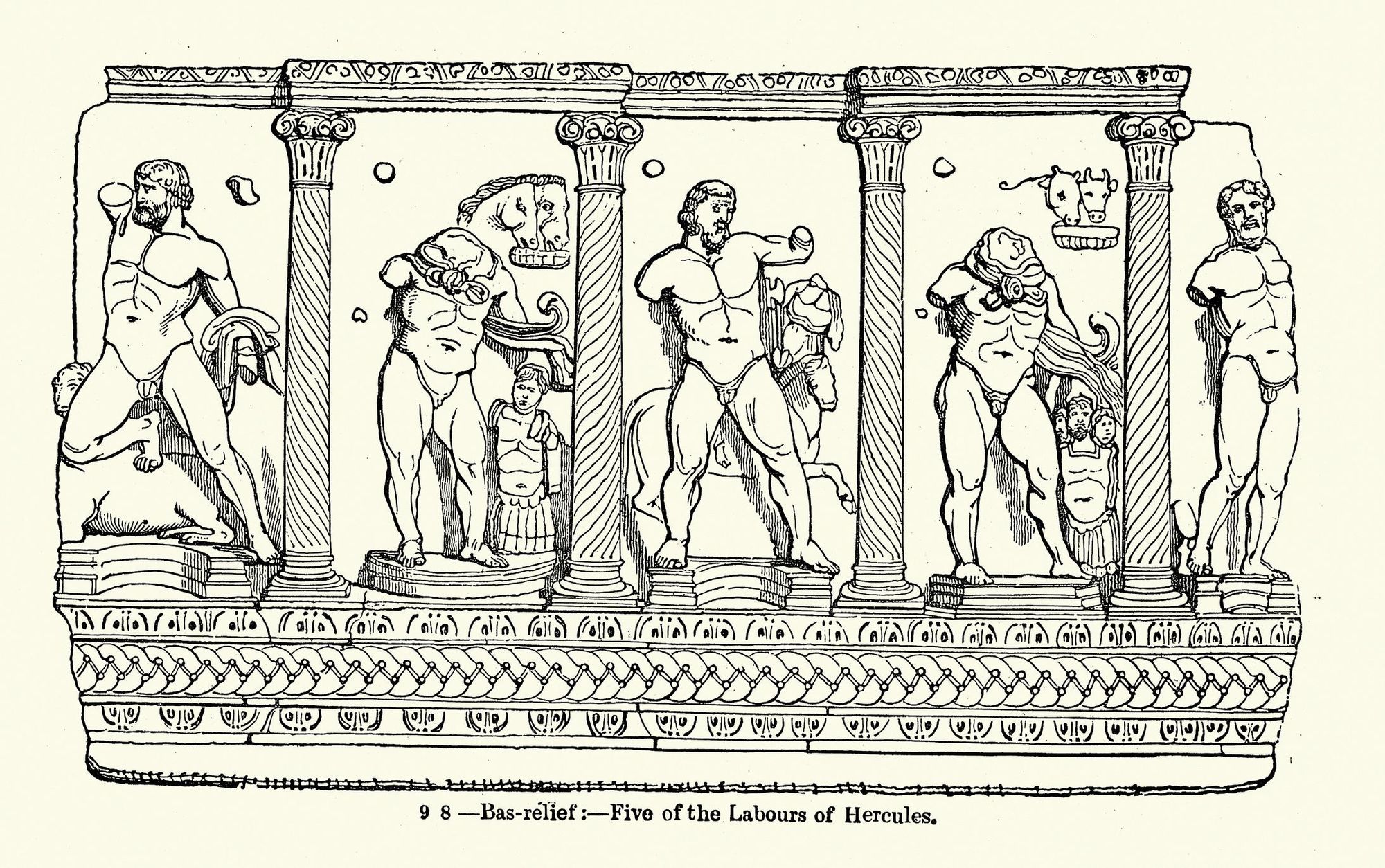
Heracles (the hero, later romanised to Hercules) was the son of Zeus, conceived during an affair. Hera, enraged, spent much of Heracles' early life subsequently trying to kill him - ultimately inducing a madness in Heracles which made him kill his wife and child. To atone for this, Heracles was made to serve King Eurystheus of Mycenae, and face a series of 12 challenges, or “labours”.
Heracles succeeded at each labour - from slaying a Nemean lion to capturing Cerberus, the hound of Hades, from the underworld. He would die years later, after being tricked by a centaur, but through the apotheosis of Zeus - awarded for completion of the 12 labours - he ascended to Olympus as a god.
There he reconciled with Hera and married Hebe, daughter of Zeus and Hera, having two children himself.

Otus and Ephialtes storm Olympus
The Aloadae were twin brothers - Otus and Ephialtes. They were aggressive, strong giants whose father was Poseidon, the god of the sea. Homer’s Odyssey tells that by the age of nine, the twins were 13.5ft (4m) wide and 54ft (16.5cm) tall.
As their size and strength developed, the Aloadae became emboldened. They captured Ares, the god of war, requiring him to be freed by Hermes after a year as a captive. The Aloadae then decided to storm Mount Olympus, to steal Artemis and Hera, who they would then marry. They planned to reach Olympus by stacking mountains on top of one another, but before they could they were killed by Apollo’s arrows. The giants were then bound to a column in the underworld back-to-back, with live snakes for ropes, while a Stygian owl screeched on the pillar above them to remind them of their failure. Don't wrong the gods.
The Flaying of Marsyas
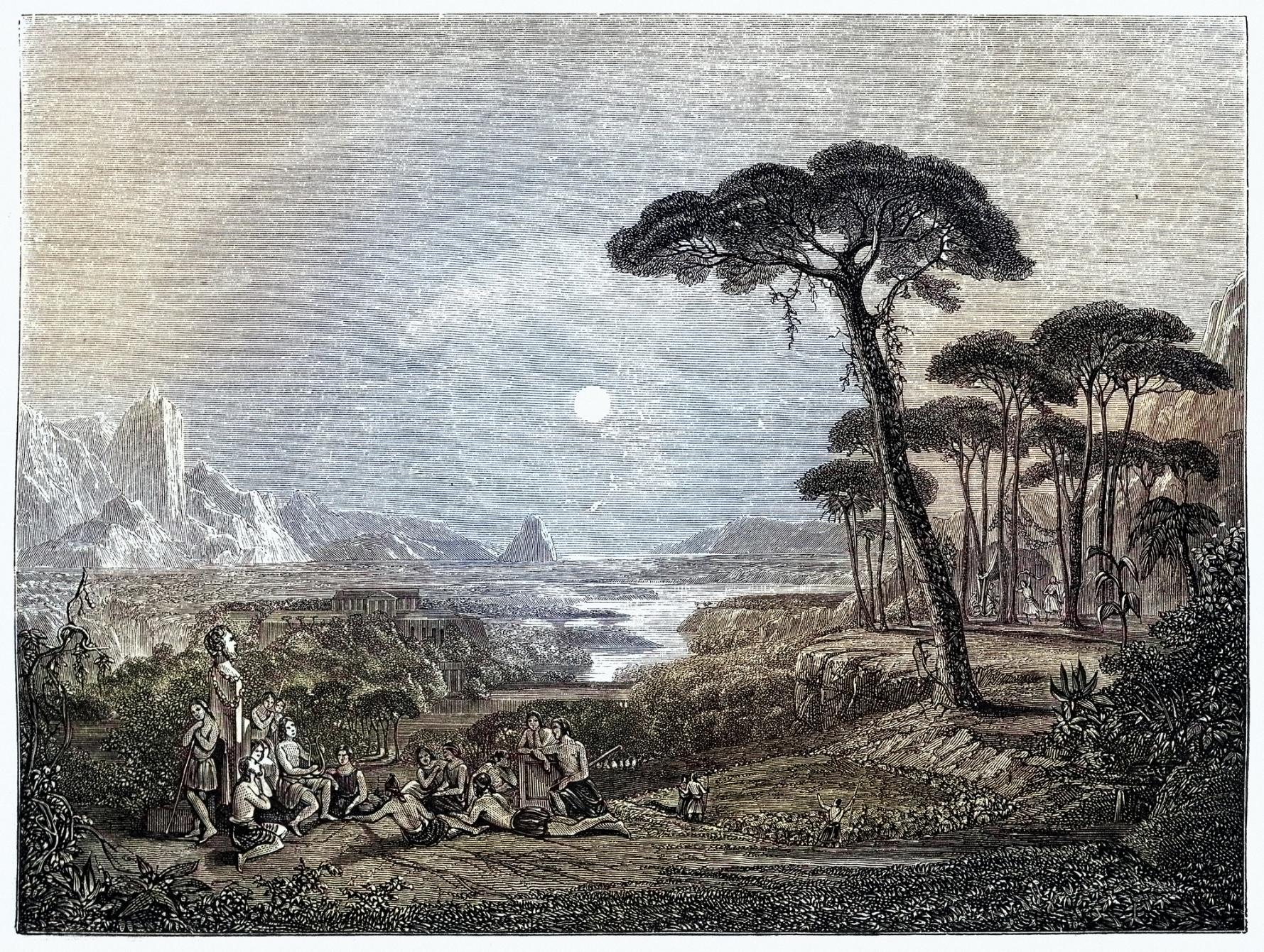
Apollo was the god of music. So, when the satyr Marsyas challenged Apollo to a musical duel on Mount Olympus, he probably should have known it wasn’t going to end well. Marsyas played the flute and he played it rather well - but just not well enough. Apollo’s talents on the lyre and his ability to sing while playing meant he comfortably won the duel, which was judged by the nine Muses.
As a punishment for his hubris, Apollo then flayed Marsyas alive for challenging a divine being and nailed his skin to a pine tree. Eek. That escalated quickly.
Typhon attacks Olympus
Typhon was a giant serpent and one of the deadliest creatures to ever exist in Greek mythology. Born of Gaia, some reports say that the creature had 100 serpent heads - each spitting fire.
According to the poet Pindar, when Typhon attacked Olympus - aiming to overthrow Zeus and take control of the cosmos - each of the Olympian gods transformed themselves into animals and fled to Egypt, leaving Zeus to fight Typhon alone. Zeus defeated Typhon with thunderbolts after an epic fight, securing the heavens and imprisoning Typhon beneath Mount Etna.
Mythology on Mount Olympus: Along the Route
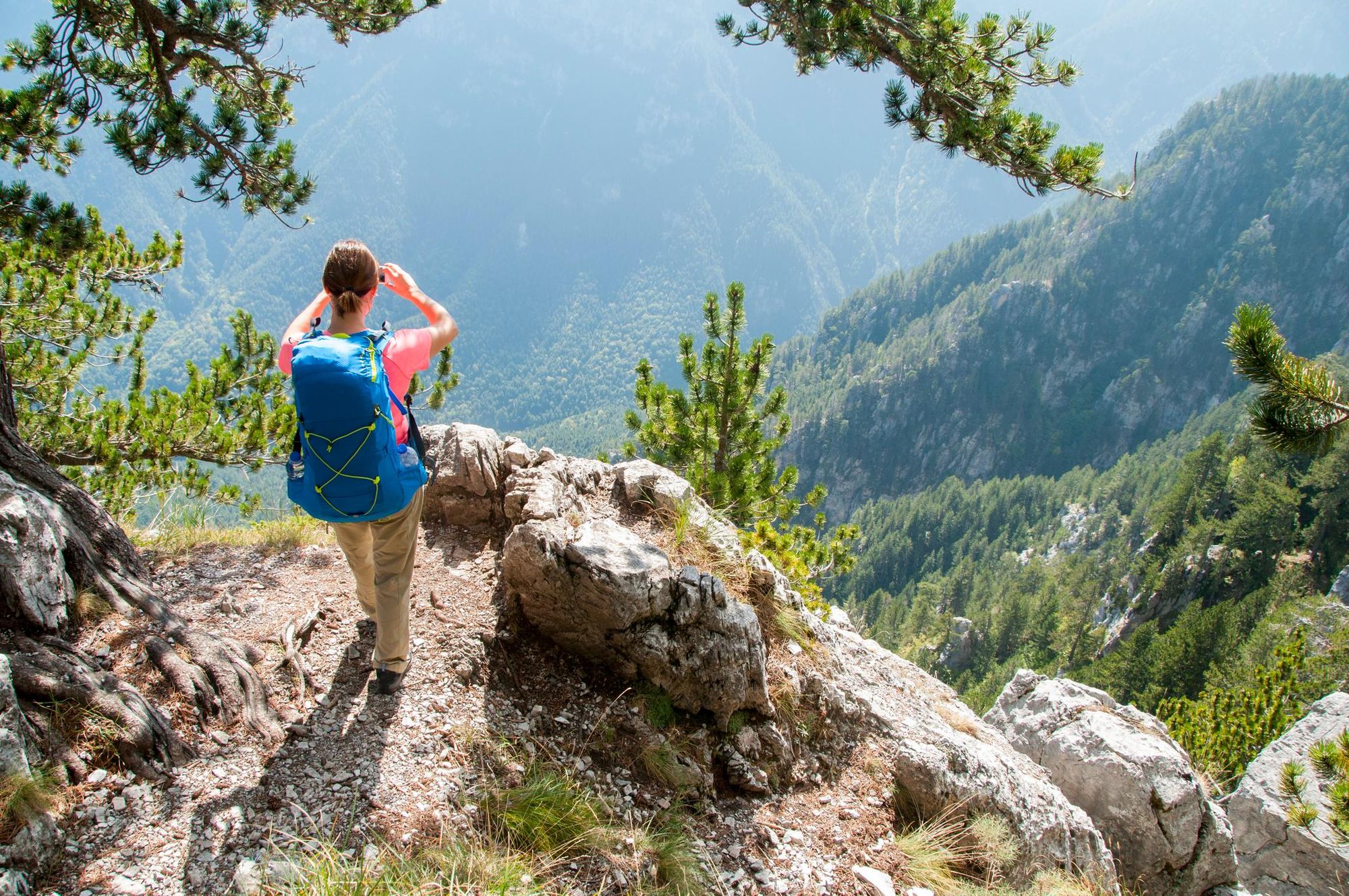
Take the E4 route up Mount Olympus today, and you can immerse yourself in the landscape of this mythology. The journey from the foot of Olympus to the summit is a journey between ancient heavens and today's earth:
- Enipeas River: The Enipeas River runs beneath Mount Olympus. The myths say that Enipeas was a beautiful man desired by all the goddesses of Olympus. When he instead chose Aphrodite, he enraged Hera, who turned him into a river as punishment. The source of the Enipeas River is at Prionia, where the hike up Mount Olympus begins.
- The border forests: On the popular E4 route you will walk through dense pine forests, where you can imagine yourself moving from the human sphere to a space in between. In the ancient myths, these forests acted as a barrier preventing human mortals from ascending to the gods. Amongst these trees, centaurs, dryads and nymphs dwelled.

- The Plateau of the Muses: It’s likely that you’ll spend the night at a mountain refuge near the Plateau of the Muses when climbing Mount Olympus. The nine Muses were daughters of Zeus and Mnemosyne, goddesses of the arts who would entertain the gods with their songs and record the stories of yore.
- Hermes’ path: From the plateau, mountain paths lead up to Olympus. The messenger god Hermes used these - when he wasn’t climbing rainbows.
- The Throne of Zeus: While sometimes Mytikas is identified as Zeus’ throne, typically it is said to be Stefani Peak, which resembles an enormous rock throne, where Zeus would sit and judge.
So, tread carefully and do try to avoid hubris on this famous peak. The ascent of Mount Olympus is fierce - whether you have a winged horse or not.
Inspired? Climb Mount Olympus in Greece - to the very throne of Zeus!

